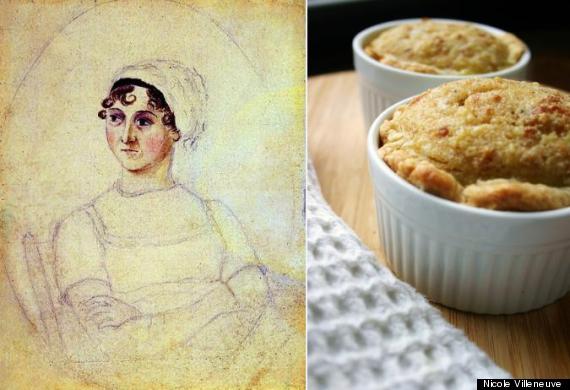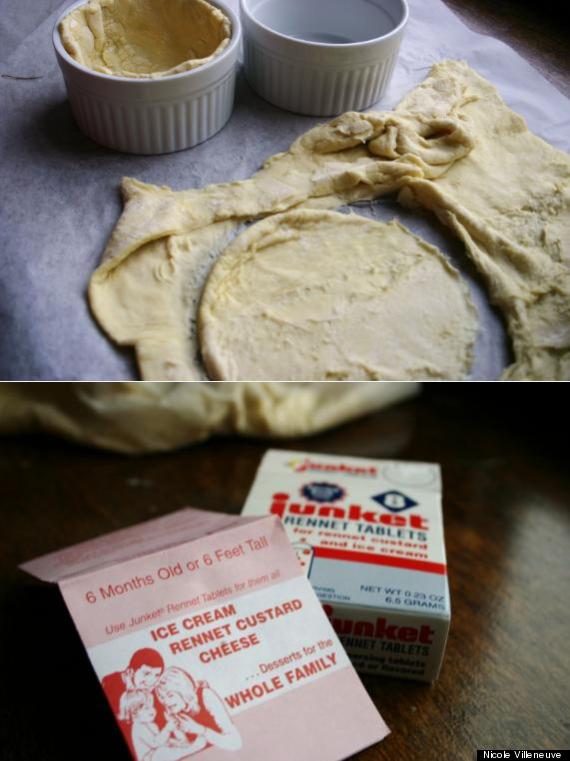
Even when you love to cook, there are those times when it would be nice to have just a little help: when you promised to make something for the office potluck but forgot to go shopping; when that dinner party you're hosting sneaks up on you; when your in-laws you dearly want to impress are in town and all you have in the pantry are the three jars of peanut butter you bought before Hurricane Sandy.
Wouldn't it be easier to live in Jane Austen's world, where you could hand off such tasks to a very capable cook? Remember poor Mr. Collins in Pride and Prejudice, who, when asking which of the Bennets had prepared the meal, "was set right by Mrs. Bennet, who assured him with some asperity... that her daughters had nothing to do in the kitchen."
Like Elizabeth Bennet, Austen wouldn't be caught dead with a roasting pan--but she did know her way around one. After all, she wrote her novels in the middle of the drawing room, constantly interrupted by household demands. "I carry about the keys of the wine and closet, and twice since I began this letter have had orders to give in the kitchen," Austen wrote to her sister, Cassandra. Maybe that's why her novels are full of meals: she couldn't write a few sentences without being asked to approve a dinner menu.
Austen was in charge of sourcing ingredients, preferring to grow fresh produce on the property. "What kind of kitchen garden is there?" she writes anxiously when her family is contemplating a move to Chawton. "I do not fail to spend some part of every day in the kitchen garden." She also oversaw what was to be planted, and where. "The Border under the Terrace Wall is clearing away to receive Currants & Gooseberry bushes, & a spot is found very proper for Raspberries," she reports.
Then there was the entertaining: a long parade of tea parties and dinner chats, so elegant in books but exhausting in the offing. After one particularly tiring evening, Austen wrote to her sister, "When you receive this, our guests will be all gone or going; and I shall be left ... to ease the mind of the torments of rice pudding and apple dumplings, and probably regret that I did not take more pains to please them all." Of course, she could always blame the cook if things didn't work out. But that's the upside to doing all the cooking yourself: When it's good, you get to take all the credit.
* * *

Several books have been written about the meals Austen might have eaten, based on the hints from her letters: She mentions legs of mutton, lobster, pea soup, and chows down on more than a few apple pies. But my favorite food moment is when Austen and her nieces take a trip to Devizes, a town in Wiltshire, and order a local specialty: "some cheesecakes, on which the children made so delightful a supper as to endear the town of Devizes to them for a long time."
But before you break out the cream cheese, Devizes cheesecakes are not what you're probably expecting. The original recipe was actually a helpful way for cooks to use leftover cake, combining the crumbs with a custard base and pouring it all in a pastry shell. It's like a smoother, creamier, cake-ier bread pudding--not your typical New York cheesecake, but I'll take it any day.
You might be asking, "Who has leftover cake?" and to that I say: good point. But this is the perfect recipe to rescue those mistake cakes: the fallen, the dry and the flavorless. Tamar Adler, in the delightful An Everlasting Meal, has a chapter on turning kitchen wrongs into rights, and this takes a page from her book. Brown butter, nutmeg and cinnamon can hide a multitude of pastry sins.
(Slightly adapted from Saveur)
1 sheet (about 1/2 lb.) thawed frozen puff pastry
4 tablespoons butter
1 rennet tablet (**See note)
1 cup milk
1/2 cup sugar
1 egg, lightly beaten
3/4 cup cake crumbs (angel food or pound cake work well)
1/2 teaspoon ground nutmeg
1/2 teaspoon cinnamon
1. Preheat oven to 375°F and grease 6 ramekins (6-ounce size). Roll out 1 sheet thawed frozen puff pastry on a lightly floured surface into a 12" x 15" rectangle. Make 6 circles, about 5" in diameter, on pastry. Cut out circles, press into ramekins, and prick all over with a fork. Refrigerate.
2. In a small pan, stirring constantly, melt butter over medium heat until it is golden brown. Set aside to cool.
3. Dissolve rennet tablet in 2 tablespoons warm water in a small saucepan. Over low heat, add milk and sugar and stir 5 seconds, just long enough to get the sugar off the bottom of the pan. Using a kitchen thermometer, cook without stirring until mixture reaches 98°F. Remove from heat and cool 5 minutes.
4. Remove ramekins from fridge. Stir egg, cake crumbs, nutmeg and cinnamon into milk mixture. Stir in brown butter. Spoon filling into ramekins and bake until pastry is golden, about 25 minutes.
** Rennet is used for cheesemaking and gives this pudding its custardy consistency. You can find it in specialty groceries or most Whole Foods Markets. Check with the cheese counter if you can't spot it.
For more literary recipes, check out Paper & Salt!